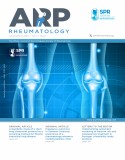A feasibility study of a short lung ultrasound protocol as a screening method for fibrotic interstitial lung disease
Authors
Sara Braga; André Carvalho; Márcio Rodrigues; Pedro Madureira; Raquel Miriam Ferreira; André Terras Alexandre; Natália Melo; Patrícia Caetano Mota; António Morais; Hélder Novais Bastos;
Keywords
Aims: Interstitial lung disease (ILD) represents a common complication of connective tissue diseases (CTD). Early detection of ILD is critical since patients often remain asymptomatic during the initial stages. While numerous studies have proposed various ultrasound protocols for ILD evaluation, we find these protocols to be time-consuming in our clinical practice. The aim of this study is to introduce a concise lung ultrasound protocol for the screening of pulmonary fibrosis.
Methods: We conducted a prospective observational pilot study involving 28 patients followed in consultation for ILDs. By implementing this streamlined protocol, we established correlations between ultrasound findings at specific locations and their corresponding tomographic patterns. Following the assessment of the protocol's diagnostic accuracy, a multidisciplinary meeting was convened to scrutinize ultrasound images from several patients and evaluate the level of agreement among rheumatologists, pulmonologists, and radiologists.
Results: Our simplified protocol revealed significant correlations between ultrasonographic pleural irregularity, discontinuity and the number of B-lines, and the tomographic findings of reticulation and honeycombing in both the upper and lower lung regions. This protocol demonstrated high sensitivity and positive predictive value in identifying reticulation and honeycombing, as well as remarkable specificity and negative predictive value for the latter. The results obtained between the specialties showed strong agreement.
Conclusion: Preliminary results suggest a role of ultrasound to detect peripheral manifestations of fibrotic ILDs, such as reticulation and honeycombing. This assessment protocol can be adopted effectively by clinicians, such as rheumatologists, to evaluate lung involvement by CTDs. A larger study is necessary to achieve more robust and generalizable results as a screening tool.
Sara Braga
Unidade Local de Saúde Póvoa de Varzim/ Vila do Conde
André Carvalho
Unidade Local de Saúde de São João, EPE
Márcio Rodrigues
Unidade Local de Saúde de Braga, EPE
Pedro Madureira
Unidade Local de Saúde de São João, EPE
Raquel Miriam Ferreira
Unidade Local de Saúde de São João, EPE
André Terras Alexandre
Unidade Local de Saúde de São João, EPE
Natália Melo
Unidade Local de Saúde de São João, EPE
Patrícia Caetano Mota
Unidade Local de Saúde de São João, EPE
António Morais
Unidade Local de Saúde de São João, EPE
Hélder Novais Bastos
Unidade Local de Saúde de São João, EPE
Unidade Local de Saúde Póvoa de Varzim/ Vila do Conde
André Carvalho
Unidade Local de Saúde de São João, EPE
Márcio Rodrigues
Unidade Local de Saúde de Braga, EPE
Pedro Madureira
Unidade Local de Saúde de São João, EPE
Raquel Miriam Ferreira
Unidade Local de Saúde de São João, EPE
André Terras Alexandre
Unidade Local de Saúde de São João, EPE
Natália Melo
Unidade Local de Saúde de São João, EPE
Patrícia Caetano Mota
Unidade Local de Saúde de São João, EPE
António Morais
Unidade Local de Saúde de São João, EPE
Hélder Novais Bastos
Unidade Local de Saúde de São João, EPE





